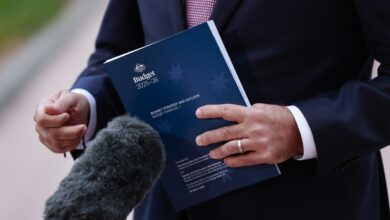Australia will vote on May 3, could this be a turning point for healthcare?

The nation will head to the polls on May 3 to decide on the next Prime Minister of Australia, in what will be a key moment for the healthcare sector.
After much anticipation, Prime Minister Anthony Albanese called the general election on Friday, after his Treasurer, Jim Chalmers, delivered the Labor party's fourth federal budget just three days prior.
“Over the last few years, the world has thrown a lot at Australia in uncertain times," the Prime Minister told reporters.
"Because of the strength and resilience that our people have shown, Australia is turning the corner. Now, on May 3, you choose the way forward.”
We have already seen the major parties battling over health reform, with bulk-billing, Medicare and public hospital funding all rising to the top of political priorities. However, the sector is calling for more.
“A critical opportunity to improve access to essential healthcare for Australia.”
– Royal Australian College of GPs (RACGP)
“Funding to grow our GP workforce faster is critical to keep pace with the need for care across the country. Australia’s population is growing and ageing, and there’s an epidemic of chronic illnesses, which requires high-quality and ongoing general practice care,” RACGP president Michael Wright said.
“It’s heartening to see bipartisan political support for significant investment to improve access to specialist GP care, and to grow Australia’s GP workforce faster to meet increasing patient needs.”
Voting for aged care
Last Tuesday's federal budget papers unveiled a planned $291.6m injection into aged care – the overwhelming response from the sector was that this is not enough to address the immense challenges providers are facing in 2025.
Catholic Health Australia (CHA) is urging all parties to centre health and aged care during the next month of election campaigning.
“This election campaign is a chance to outline real reform in health and aged care, ensuring private hospitals remain viable, public hospitals attract appropriate investment, aged care residents receive quality and sustainable care, and regional communities are not left behind,” CHA chief Jason Kara said.
“The accommodation supplement for aged care residents in financial hardship must be increased and processing times for hardship applications must be reduced to prevent delays in essential care.
“We also need a staged six-month transition to the Support at Home program to ensure providers are ready for the new system.”
CHA puts forward six key priorities for the aged care sector:
- Tackle aged care workforce shortages
- Address risks to the success of the reform
- Support aged care providers in rural areas
- Strengthen support for home-based aged care
- Enhance hardship provisions in aged care
- Implement long-stay reforms to reduce bed block
“About one in three Australians live outside a capital city, yet they face greater barriers to care. We need urgent investment to ensure regional and rural communities receive the same quality and choice of care as everyone else,” Mr Kara said.
Related: Tit for tat: Major parties put health at the centre of pre-election promises | “Should not be rushed”: Peaks express post-budget concerns for reform rollout | Labor unveils next step in healthcare overhaul
Prioritising rural
In a bid to address the ongoing health disparities between metro and rural areas, the National Rural Health Alliance (NHRA) is calling for a $1 billion National Rural Health Fund, designed to reduce healthcare delivery payments and build the necessary infrastructure for a healthy future.
The NHRA has reminded political leaders that while rural Australians generate 70 per cent of the nation's export income, they receive $848 less per person in healthcare funding.
“We urge all Australians and the candidates who seek their votes to recognise and address the healthcare challenges and earlier deaths that persist in rural areas, ultimately impacting all Australians,” NRHA Chief Executive Susi Tegen said.
“We ask for their support to implement a National Rural Health Strategy to coordinate Commonwealth, State, and Territory policy, investment and service delivery. This will ensure grassroots-led, sustainable solutions for rural communities throughout the patient journey.
“It is time for all political leaders to step up, commit to the 7.3 million rural people that they would implement long-term solutions, and ensure that no Australian, no matter what their postcode, is left behind when it comes to accessing quality health care.”
⮚ Stay in the loop this election. Read more here.
Email: [email protected]






